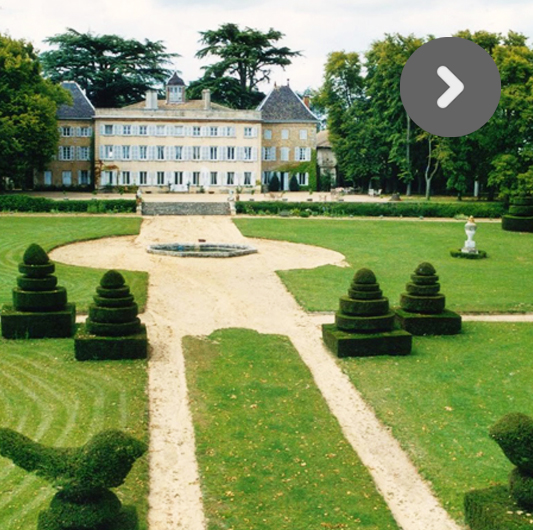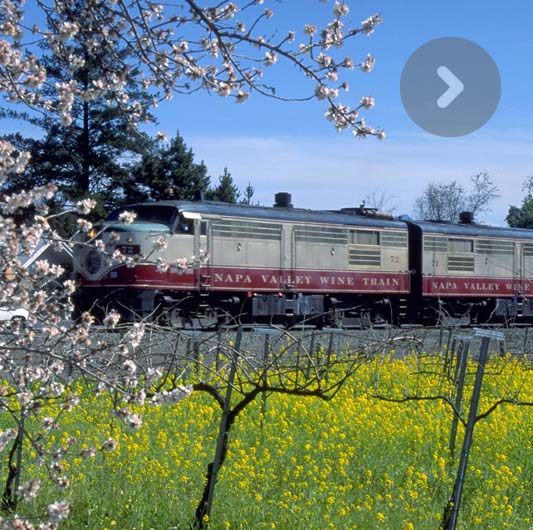Only 15 kilometres separates the villages of Bourg and Blaye. Each one has lent its name to a wine region: the Bourgeais and the Blayais. Two territories separated by the Brouillon stream, each with its own appellation: AOC Côtes de Bourg and AOC Côtes de Blaye, to which should be added the Bordeaux Supérieurs and the Crus Bourgeois.
The vineyards stretch up from the banks of the estuary to the hilltops and terraces from which there is a magnificent view. The proximity to the sea means there is a microclimate. A mild oceanic climate which enables the grapes to mature nicely. These wines are thus gorged with strong character that the winemakers have learnt to tame in order to deliver velvety wines that are softer in depth.
Anglade

Château Le Queyroux. The estate belongs to Léandre Chevalier, a craftsman-winemaker and gardener who defines himself as the “man Horse”, the literal translation of his name. With his grandparents who were winemakers, carters, tree cultivators, Léandre’s destiny was all written. In 1999, he owns three hectares of vineyards and keeps one hectare to cultivate following ancient methods in a spirit of duty towards the companions of the tour of France, ploughing with work horses, respecting the land, using cement casks. An artist, he started planting his vines in circles in 2006 with petit verdot vine plants to produce proper wine for the future. Léandre thus joins the group of next generation winemakers. A whole range of fruity and mineral Bordeaux wines, the L Q Y AOC Blaye Côtes de Bordeaux produced with half merlot noir and half cabernet sauvignon grapes, remains fruity and full of freshness. The C Que du Bonheur is vinified as whole grapes that are very ripe and undergo traditional treading. The Eighth Marvel, elaborated with the finest merlot noir, cabernet sauvignon and some petit verdot grapes, is marked by fine and elegant tannins. Typical for the Gironde region, the large nineteenth century family residence, with a garden and pool, offers two guest rooms. www.lhommecheval.com
Cars
Cave du Blayais. The cellar brings together some twenty wine growers. It vinifies the grapes of eight of them separately. The grapes come from wine growers who each have a château appellation. The cellar is in fact a communal vinification plant and a shop window for the Blayais wines. Tastings take place all year round from Monday to Saturday and by appointment on Sundays. www.lacavedeschateaux.com
Marcillac
Domaine de Tout l’Y Faut. Welcome to the farm, there is almost everything you need there: an old renovated farm, an agricultural and wine growing estate that produces Premières Côtes de Blaye wines, and also offers a range of products grown and produced at the farm. Blayais’ renowned asparagus, vegetables, preserves, jams and wine confits can be bought from the shop. A pedagogic farm, which communicates through interactive workshops on the theme of the “vegetable cycle and the harvest of asparagus”, the “vine and wine harvest” and the “fruit and its transformation”. Workshops by appointment.www.toulyfaut.typepad.fr
Plassac
Monconseil Castle
Château Monconseil. Originally called “Mauconseil”, Emperor Charlemagne is thought to have stayed at the château and held counsel to determine the fate of the Sarasin prisoners. It turned out to be good counsel as the prisoners were graced and the château was renamed “Mon conseil”. The château became a wine estate in 1834 under the direction of the Baudet family, which passed the baton down from father to son, from Joseph to Michel and Sebastian today. The château produces vintages in Première Côtes de Blaye and wines in the three colours. A red, to put down, coarse with a ruby colour, vanilla and spicy notes. A white, luminous sauvignon with yellow-green highlights, full bodied with zesty aromas. The rosé, an intense pink, supple and bright with flavours of rose and pepper. The baby of Monconseil, the 2003 vintage blend, was produced to celebrate the seventh generation of the Baudet family, Lise. The label is her creation. The 2007 vintage, won the silver medal at the “Feminalises” competition in 2011, and marks the birth of Rose, their second daughter. Visits and tastings by appointment during the week. Open Day in March in partnership with the winemakers of the “Soif de Vin et de Savoir” association. Very convivial! www.chateaumonconseil.com
Saint-Genès-de-Blaye
Château Segonzac. A grand and beautiful bourgeois residence with vineyards opposite the estuary. The château de Segonzac vintage was created in 1887 by Jean Dupuy, Minister for Agriculture and the founder of the “Le Petit Parisien” newspaper. The estate produces AOC Première Côtes de Blaye wines. Visits and tastings all year round from Monday to Friday. www.chateau-segonzac.com
Château Le Virou A wine for mass! In the twelfth century, a pious man from Calabrais on his way back from the Crusades decided to retire to the Carmel Mountain next to Virou. He founded the order of Notre Dame of the Mont Carmel. Later on, the Gourgue family donated 97 hectares of land to the community at La Forest to build a convent. The monks built a wall around the estate to isolate themselves from the outside world. During the Revolution, the convent was sold to a rich trader from Bordeaux and turned into a wine estate. The wall has remained and now surrounds 75 hectares of vineyards. According to historians, an old underground passage, used as a cellar, runs all the way to the town of Blaye. Visits and tastings all year long by appointment. Tel.: +33 5 57 43 43 82
Saint-Seurin-de-Cursac
Château Roland la Garde.
A wine for mass! In the twelfth century, a pious man from Calabrais on his way back from the Crusades decided to retire to the Carmel Mountain next to Virou. He founded the order of Notre Dame of the Mont Carmel. Later on, the Gourgue family donated 97 hectares of land to the community at La Forest to build a convent. The monks built a wall around the estate to isolate themselves from the outside world. During the Revolution, the convent was sold to a rich trader from Bordeaux and turned into a wine estate. The wall has remained and now surrounds 75 hectares of vineyards. According to historians, an old underground passage, used as a cellar, runs all the way to the town of Blaye. Visits and tastings all year long by appointment. Tel.: +33 5 57 43 82 www.chateau-roland-la-garde.com









